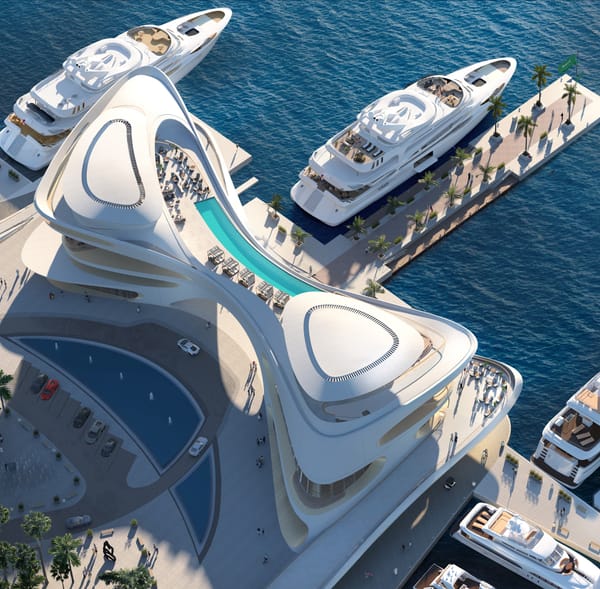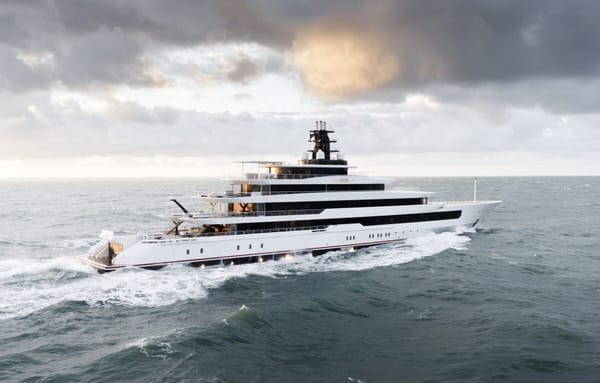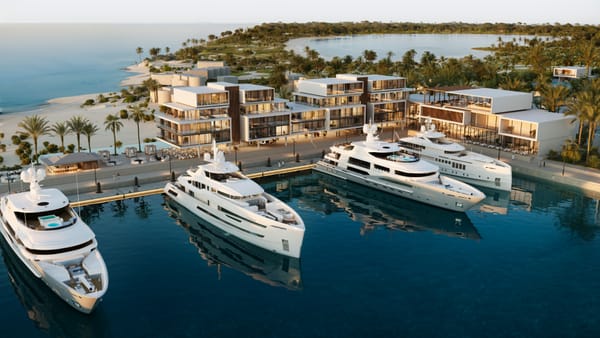Beaufort: the Wind Scale for Boaters
Many Americans haven't even heard of it, but it's the simplest way to describe boating conditions.

I'd bet real money that, at least a few times, you've heard someone describe boating conditions like this:
"It's lumpy out there."
"It's a little choppy, but it's fine."
"Decent waves, for sure. It was rough coming in."
Through the course of conversation, you probably got the gist of it — but what does "lumpy" mean? What constitutes a "decent" wave? "Rough" conditions in a skiff might be no problem at all for a larger, heavier, full-keeled boat.
Good news: there's an easy, quick, standardized way of communicating both winds and waves — it's so good, it's been around for over 200 years. It's called the Beaufort scale, and Americans, in particular, can save a lot of time by learning to use it.
First, though, a note about colloquial use: different people might express a Beaufort number as "Beaufort four," "Beaufort force four," "force four," or "F4." For me, the first is the clearest, and "F4" is the worst choice — although tornadoes these days are measured on the Enhanced Fujita Scale, e.g. "EF4," many Americans still use "F4" and similar in conversation when discussing tornadoes, and an EF4 is very different from Beaufort force 4. You'll see what I mean:
Beaufort 0

Absolutely flat. No wind, no waves. Best, or at least safest, conditions for anything not involving wind.
Beaufort 1
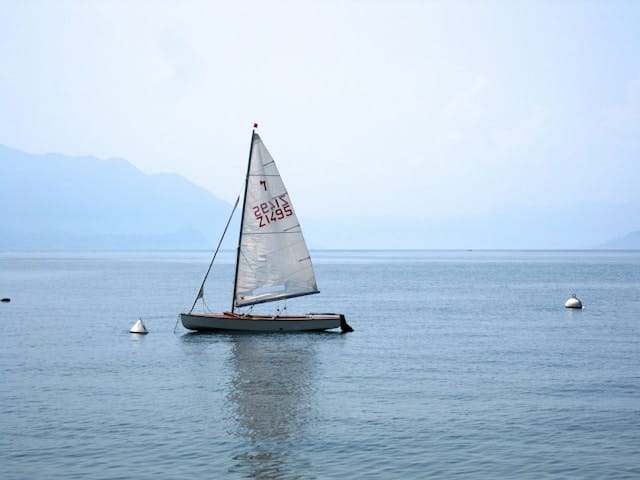
"Light air." Wind: 1-3 knots, or 1-3 mph. Waves: Small ripples, like textured glass. As above, good conditions for anything not involving wind.
Beaufort 2
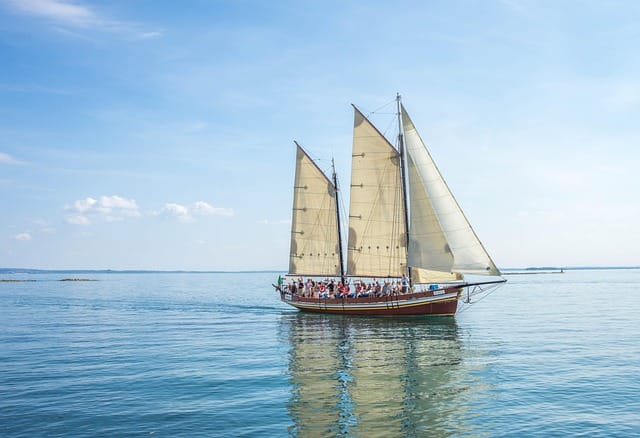
"Light breeze." Wind: 4-6 knots, or 4-7 mph. Enough to rustle leaves a little, but not much else. Waves: note the very minor presence of longer wavelengths beneath the ripples — this is the visual difference between 1 and 2. As above, good conditions for anything not involving wind.
Beaufort 3
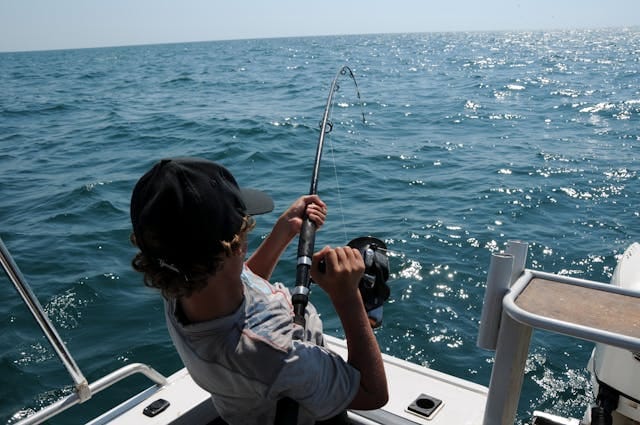
"Gentle breeze." Wind: 7-10 knots, or 8-10 mph. Flags will start to flutter. Waves: Notice the appearance of larger wavelets — they might break into a little foam. Smaller vessels will rock gently. Good conditions for activities not involving wind, as well as sailing small, lightweight dinghies.
Beaufort 4

"Moderate breeze." Wind: 11-16 knots, or 13-18 mph. Notice the flag and the sails (and the fact that it's upright with so many sails raised); you wouldn't want to have loose papers lying around on deck. Waves: 3.5-6 feet, but remember: half the wave's "height" is effectively underwater; a wave has both a crest and a trough, and the height is the vertical measure of both. Small white crests are the visual key. Good conditions for any activity.
Beaufort 5
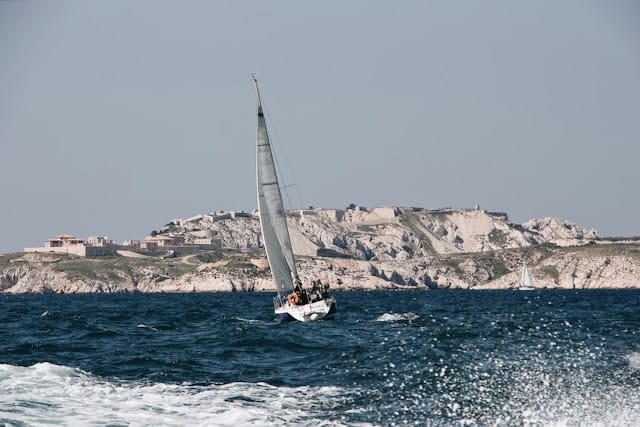
"Fresh breeze." Wind: 17-21 knots, or 19-24 mph; enough to sway small trees. Note also, here, that the sailboat is heeled to one side: this is a good indicator from shore; you may also see smaller vessels making a pitching motion (the prow of the boat moving up and down). Waves: 6-10 feet (but again, only half that height might be obvious). You can see larger waves here and there; white crests are common; there's a little spray.
Good conditions for most activities, with some caution: it'll be bumpy tubing, for example, and inexperienced sailors may be nervous when they begin to heel. Small fishing boats and skiffs should take care.
Beaufort 6
"Strong breeze." Wind: 22-27 knots, or 25-31 mph. Note the spray carried on the wind. On land, an umbrella would start to feel like an impediment. Waves: 9-13 feet. Note the spray and the constant motion of the bow.
I've seen this called "the top end of sporty:" it's when small craft advisories start to get issued, and it's probably at the end of the comfortable, safe boating spectrum for most vessels. Smaller fishing boats aren't going to have a great time, and it wouldn't be a fun day for tubing, jet skiing, and so on. Thrill-chasers may enjoy sailing cruisers in a force 6, but they should be experienced enough to know when to drop or reef sails.
Beaufort 7
"Near gale." Wind: 28-33 knots, or 32-38 mph. Note the sails, how the spray carries, and the sound. The condition of larger cruising sailboats is a good indicator, again: this one's heeling hard; when it hits a trough, the water splashes higher than the gunwale ("the edge," for the uninitiated). Waves: 13-19 feet. Even large ships won't be completely steady; smaller vessels risk pitching into the waves in front of them.
As above, this is good sailing weather for experienced thrill-chasers with heavier cruisers. It's not particularly advisable for anything else.
Beaufort 8
"Gale." In this U.S., this'll come with a double-red pennant warning. Wind: 34-40 knots, or 39-46 mph. Waves: 18-25 feet.
If you didn't notice, the title of the video is "Coast Guard rescue," so that's what kind of weather a gale is. There's no good reason to be out in this for recreation.
Beaufort 9
"Severe gale." This is tropical storm territory in terms of intensity. Wind: 41-47 knots, or 47-54 mph. Waves: 23-32 feet. Note the decreased visibility due to the constant spray.
Only cargo and industrial vessels are likely to be out in a strong gale — even large cruise ships avoid them.
Beaufort 10
"Storm." Wind: 48-55 knots, or 55-63 mph. Notice how the spray in the wind is so constant that it actually obscures the surface of the ocean. Waves: 29-41 feet.
Beaufort 11
"Violent storm." Wind: 56-63 knots, or 42-74 mph; extremely reduced visibility. Waves: 37-52 feet.
Beaufort 12

"Hurricane force." Wind: greater than 64 knots or 73 mph. Waves: greater than 46 feet. Even massive cargo ships can't withstand hurricanes, as evidenced by the loss of the SS El Faro to Hurricane Joaquin.
Most people will never see the top end of these conditions, but it's worth keeping in mind that even the middle of the scale can be sketchy for the right (or wrong) vessel. By choosing not to go out when wave height is more than 30% of your length overall, you'll minimize risk to you, your passengers, and your yacht.



